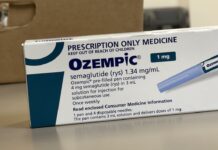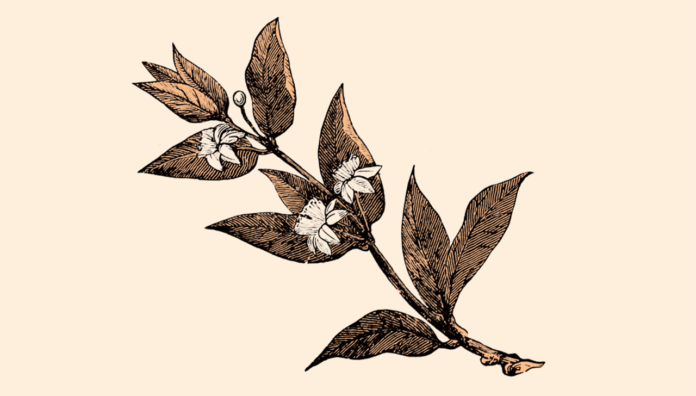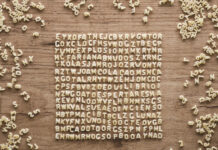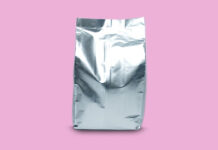Nearly 40 years ago, a seed of unknown identity was recovered during the archaeological excavation of a cave in the Judean desert.
The well-preserved seed, nicknamed Sheba, was stored until 2010 at the Hebrew University of Jerusalem. That is when paediatrician and medicinal plant expert Dr Sarah Sallon of Jerusalem’s Natural Medicine Research Center planted it.1,2
Today, Sheba the tree is three metres tall. This year, Dr Sallon and her colleagues, including University of Western Australia molecular scientist Dr Gavin Flematti, conducted DNA sequencing, and phylogenetic and radiocarbon analysis of resin, leaf and stem samples.1–3
The result: Sheba fell from an extinct Commiphora tree roughly 1,000 years ago, a genus within the myrrh and frankincense family (Burseraceae)1–3
Well, what is myrrh, anyway?
Modern myrrh trees thrive in the Arabian Peninsula, northeast Africa and India.6–8
Originating in Arabia, myrrh is a yellow, aromatic gum resin secreted from the bark of trees from various species of the Commiphora genus in the Burseraceae family. The family includes myrrh’s cousin, frankincense, also a resin.4–7
Myrrh contains numerous phytochemicals: diterpenoids, triterpenoids, steroids and terpenoids like monoterpenoids, sesquiterpenoids and volatile essential oils.7
Uses then
The word ‘myrrh’ comes from the Arabic word murr, meaning bitter.8,9
It has been used medicinally for at least 2,000 years. Greek physician Hippocrates (460–370 BCE) documented its benefits. And Romans commonly carried myrrh to the battlefield to clean wounds and sores.5,8,9
Thanks to Dr Sallon’s team, their newfound Commiphora tree is now a candidate for being the original source of tsori – or translated in English as ‘balm’.
‘The identity of Biblical tsori has long been open to debate,’ the team wrote of the healing balm discussed in Genesis and the Books of the Prophets.1–3
And speaking of the Bible, myrrh is mentioned in the New Testament, written between 49 CE to early 2nd century CE as one of the gifts the three wise men brought to baby Jesus: gold, frankincense and myrrh.9 Myrrh has also had a place in the pharmacopeia of Chinese, Unani and Arabic physicians since at least 600 CE.
They used it to manage gastrointestinal and genitourinary disorders, along with pulmonary and respiratory problems, particularly asthma, chronic cough, diphtheria, pharyngitis, tonsillitis, the common cold, and bronchitis.8
Courtesy of Hippocrates and the Roman army, myrrh went global. Inflammatory disease, aches, fractures, obesity and microbial infection were added to its uses list. Myrrh was also highly valued for its fragrant aroma and as a food additive.1,4
Uses now
Myrrh’s traditional therapeutic uses continue worldwide, especially in China and Egypt. Add syphilis, leprosy, cancer, even menstrual problems and skin care, among others.4,9–11
In 1992, myrrh was approved as a food additive by the US Food and Drug Administration. Today, myrrh oil products are listed as a medicine by the Therapeutic Goods Administration.4,13
Laboratory research is beginning to find evidence that myrrh may potentially have legitimate health applications. Promising findings have been reported for rheumatoid arthritis, cancer, myocardial infarction, inflammation, autoimmune disease as well as high cholesterol.5,9,12,14,15
Nonetheless, many such claims require further study. Case in point: COVID-19. Evidence that myrrh fights the virus is contentious. Go, science!7–10
References
- Sallon S, Solowey E, Gostel MR, et al. Characterization and analysis of a Commiphora species germinated from an ancient seed suggests a possible connection to a species mentioned in the Bible. Commun Biol 2024. Epub 2024 Sep 10.
- Siegel-Itzkovich J. Hadassah University Medical Center solves biblical mystery with ancient seed. Jerusalem Post 2024.
- Pare S. Lost Biblical tree resurrected from 1,000-year-old mystery seed found in the Judean Desert. Live Science 2024.
- Suliman RS, Alghamdi SS, Ali R, et al. The role of myrrh metabolites in cancer, inflammation, and wound healing: prospects for a multi-targeted drug Therapy. Pharmaceuticals (Basel) 2022;15(8):944.
- Su S, Duan J, Chen T, et al. Frankincense and myrrh suppress inflammation via regulation of the metabolic profiling and the MAPK signaling pathway. Sci Rep 2015;5:13668.
- Aronson JK, ed. Myrrh. Meyler’s side effects of drugs (Sixteenth Edition). Elsevier 2016. p 1158.
- Batiha GE, Wasef L, Teibo JO, et al. Commiphora myrrh: a phytochemical and pharmacological update. Naunyn Schmiedebergs Arch Pharmacol 2023;396(3):405–20.
- Abukhader R, Al Tawaha ARM. Amazing benefits of myrrh. Int J Pharm Res 2021.
- Nordqvist J. Health benefits and risks of myrrh. Medical News Today 2018.
- WebMD. Myrrh – uses, side effects, and more. 2020.
- RxList. Myrrh. 2024.
- ElMosbah DE, Khattab MS, Emam SR, et al. The anti-inflammatory effect of myrrh ethanolic extract in comparison with prednisolone on an autoimmune disease rat model induced by silicate. Inflammopharmacol 2022;30:2537–46.
- Australian Government Department of Health and Aged Care. Therapeutic Goods Administration. Myrrh.
- Su S, Wang T, Chen T, et al. Cytotoxicity activity of extracts and compounds from Commiphora myrrha resin against human gynecologic cancer cells. JMPR 2011;5(8):1382–9.
- Younis NS, Mohamed MW. Protective effects of myrrh essential oil on isoproterenol-induced myocardial infarction in rats through antioxidant, anti-inflammatory, Nrf2/HO-1 and apoptotic pathways. J Ethnopharmacol 2021;270:113793.



 Now a PhD candidate, former Sudanese refugee and NSW Pharmacist of the Year
Now a PhD candidate, former Sudanese refugee and NSW Pharmacist of the Year  David North OAM
David North OAM NSW Early Career Pharmacist of the Year Lily Pham
NSW Early Career Pharmacist of the Year Lily Pham



 Professor Stephen Nicholls[/caption]
Professor Stephen Nicholls[/caption]








